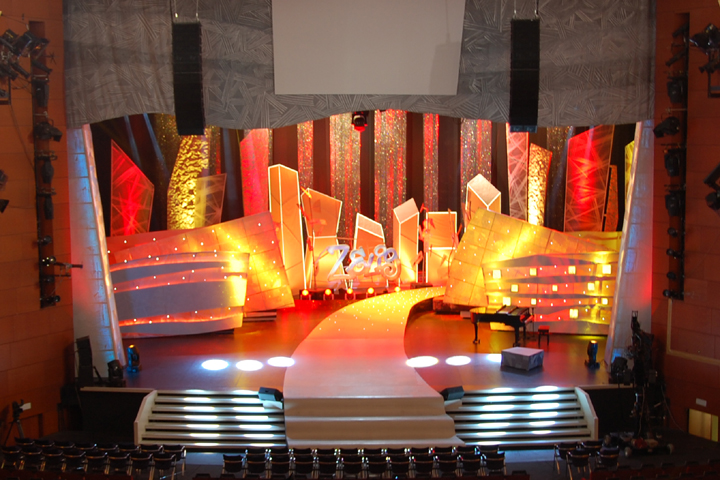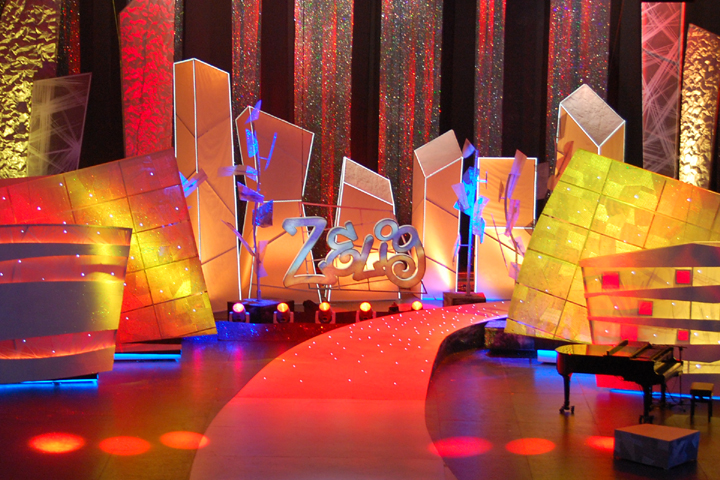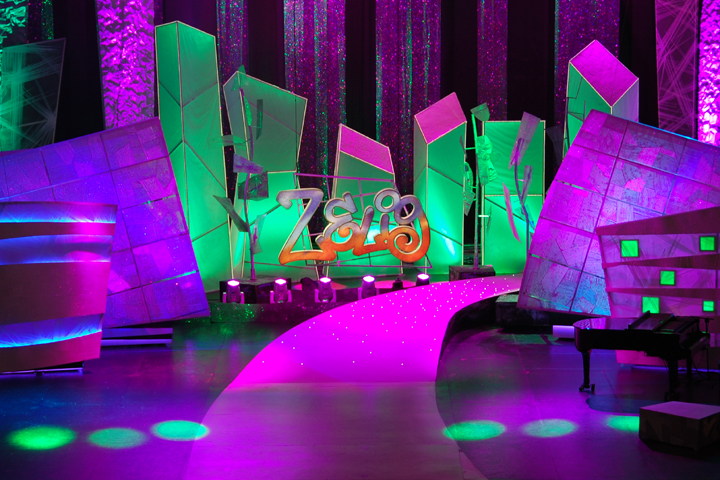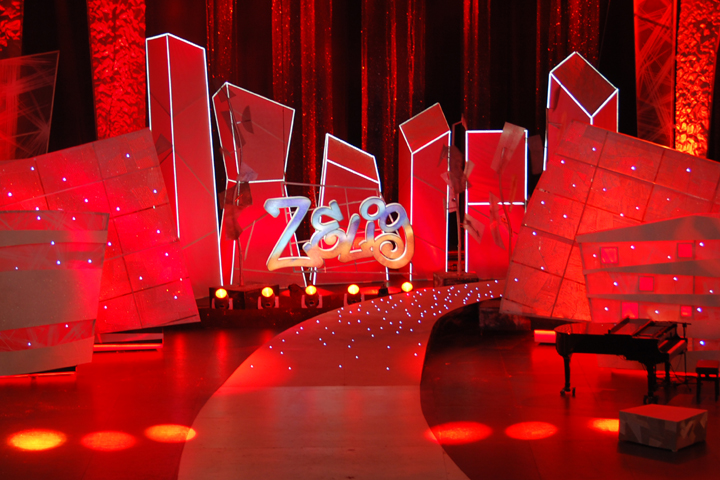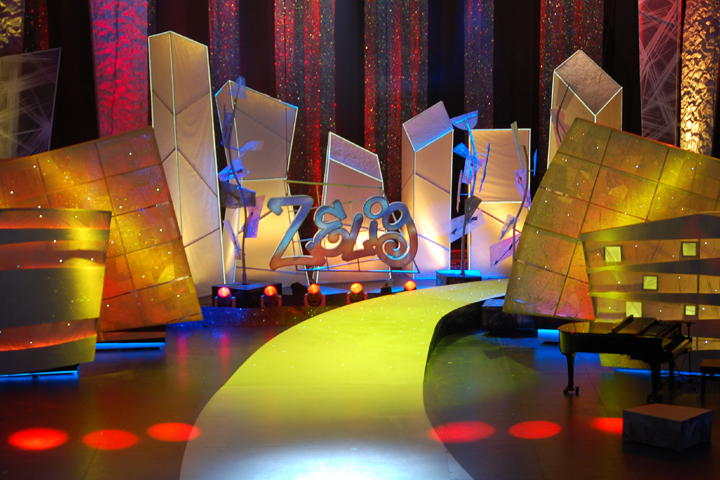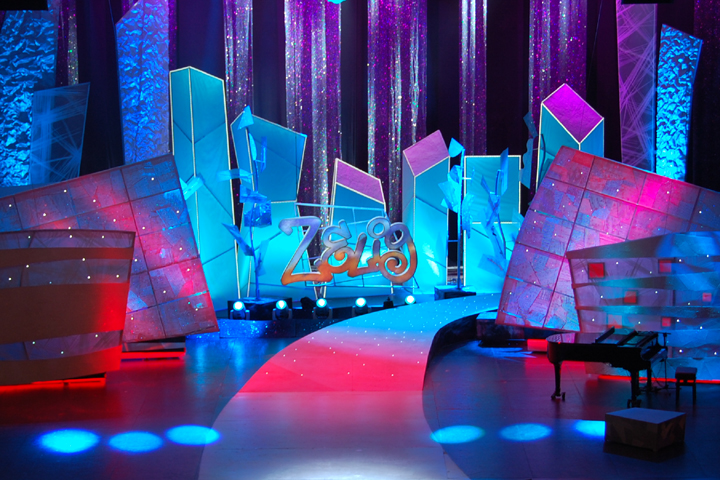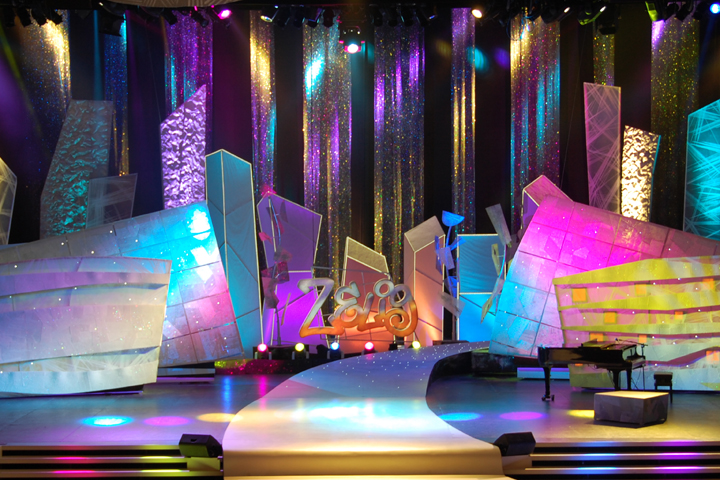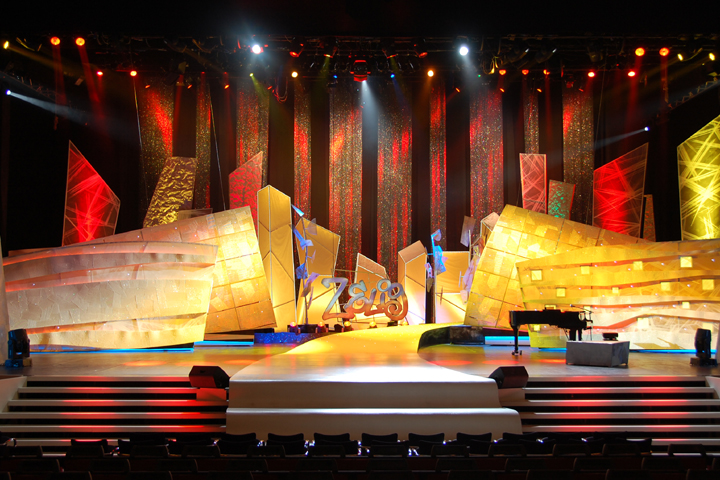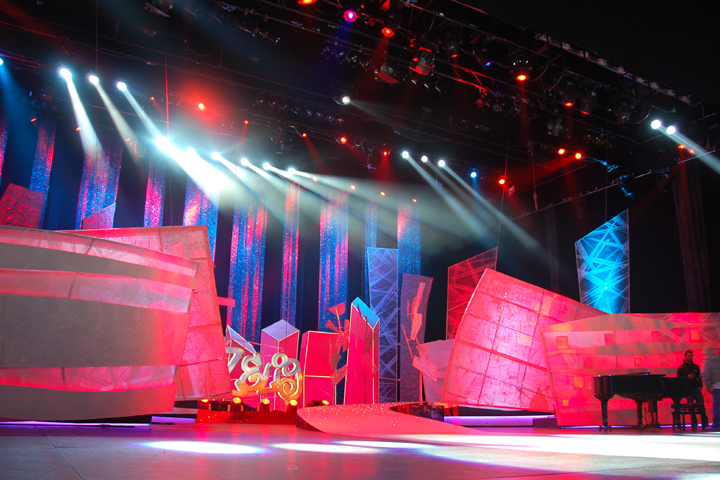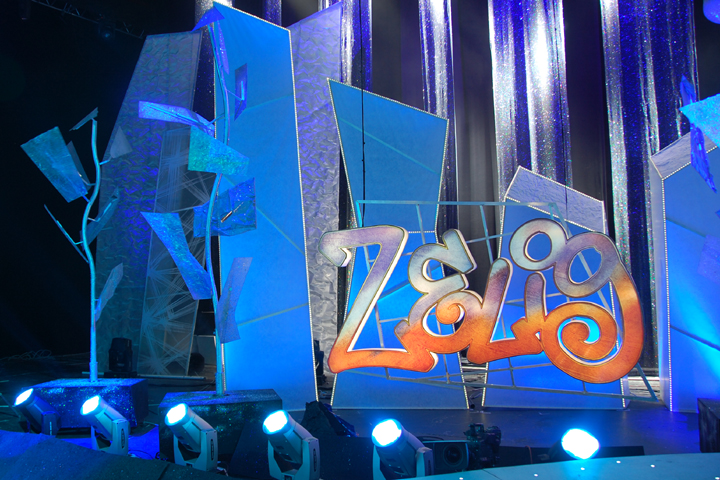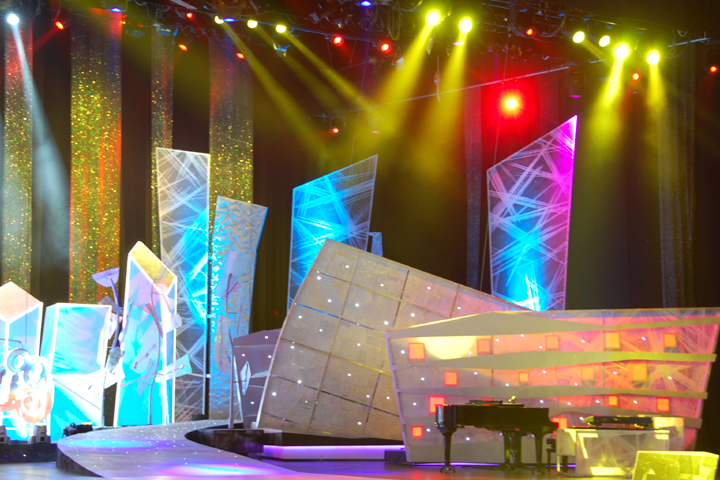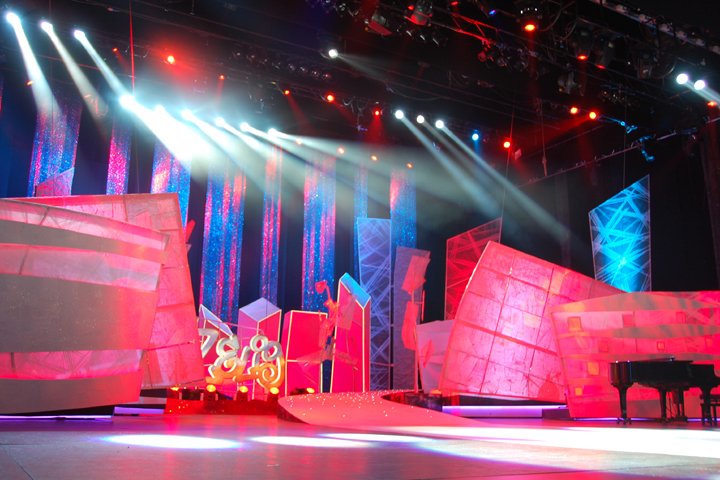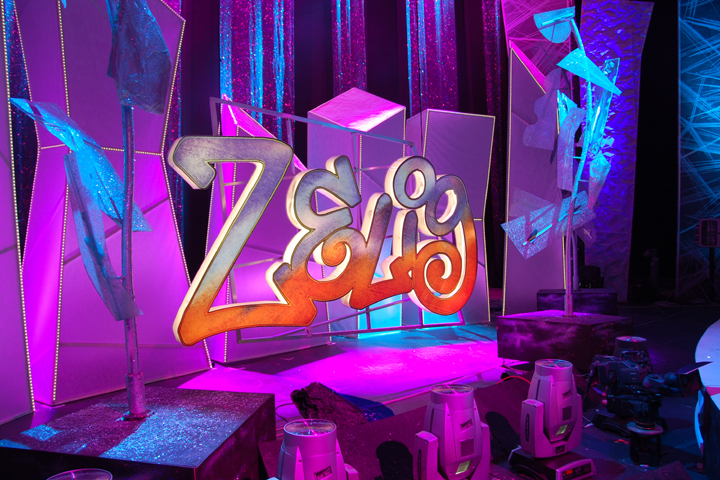Zelig is and has been one of the most loved and most followed variety shows on Italian television for many years. It is a true breeding ground for home-grown theatre and cabaret talents, most of which have their present and future success as stage artists assured.
As in previous seasons, the motorized lights for the 2009-10 shows are provided by Renato Neri’s Xenon, and consist almost entirely of Clay Paky lights: Alpha Spot HPE 1200s, Alpha Spot 575s, Alpha Wash 575s, Stage Color 1200s, Stage Profile Pluses, CP Color 400s and Alpha Beam 300 motorized ACL lights. The lighting was designed by the photography director Daniele Savi, who tells us in this interview that he has clearly favoured the television and show aspects to the theatrical set-up that characterized past seasons.
“I have worked a lot with a photographic approach,” says Daniele Savi. “I have dimmed all the lights so that I can open the TV camera apertures more. This means I have less depth of field, and therefore a blurred background, which results in a double advantage: it concentrates attention on the star on the stage by isolating him/her from the backcloth and, at the same time, it creates a more uniform background giving a greater feeling of space.”
“A more general advantage of dimming is that I can work with greater margins in both directions. For instance, I can turn the lights up full during the breaks and musical interludes, thus creating an intentionally overexposed effect that differentiates them from the more ‘sketch-like’ parts. The powerful Alpha Beam 300 lights are fundamental during this stage. Despite their 300 Watt power rating, they have incredible luminous efficiency and are able to create scene changes all on their own.”
One fundamental aspect when working simultaneously with several lights is colour adjustment, as Daniele Savi explains: “regarding colours, I fitted ½ blue conversion gels to the incandescent lamps already found in the theatre in order to raise the colour temperature up to about 3700 K. Then, I set the camera value to 4500 K, which is exactly half way between the colour temperatures of the incandescent lamps and the discharge lamps. This gave the faces picked out by the lights a nice rosy complexion. At the same time, allowed me to illuminate the scene screens with some dimmed discharge washlights without any further colour temperature correction.”
The set, designed by Enrico Dusi, was intentionally fairly essential, but made wide use of different materials: iron and wood on the screens and panels that formed the outline of a city, and a backdrop consisting of a black cloth covered with sparkling glitter to increase the depth of field. Meticulous testing of the effects of coloured light on the colours of the scenery was fundamental. In this way, the scene can be made to change colour and brightness, and the city to become clearer or fade under the shapes traced out by the LED strips according to the star on the stage.
“Marco Beltrami, the director, was very clear on this point,” Savi adds. “He wanted a marginally invasive set to concentrate attention on the stars. Most of the scene changes were to be achieved by light and colour changes, and this was the precise guideline I followed when I designed the lighting. Working in this way is positively rewarding for a director of photography!”
Lastly Daniele Savi spends a few words on the Clay Paky lights, found in large numbers and great variety, that make up 90% of all the lights used. “I am using Clay Paky lights in several programs, and I find them to be very good, especially for image definition and light quality, which is perfect both with the latest generation lights and the ‘old’ gallant Stage Colors. The most recent additions, the ‘beams’, are truly innovative. They are able to ‘trace out’ voids with light, and do spectacular high-low ray crosses like no other lights. They are highly suitable for live shows, and for television too, where they are a precious additional show or contrast element that aids scene changes.”
Daniele Savi was helped in the lighting design by Compulite operator Gaetano Rando and the chief technician of Xenon, Doriano Romboni.



















